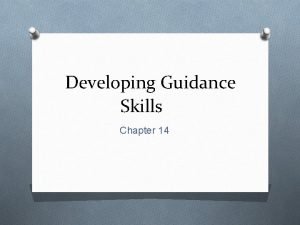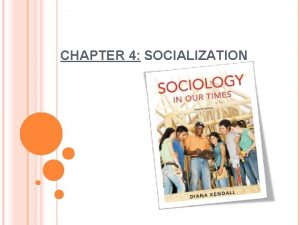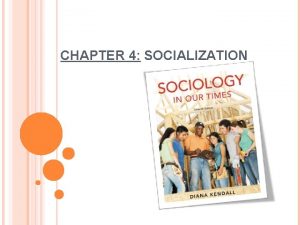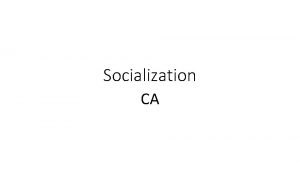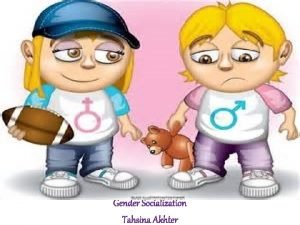Socialization Chapter 4 Chapter 4 Socialization Developing a





- Slides: 5

Socialization Chapter 4

Chapter 4: Socialization Developing a Social Self • Self: a person’s conscious recognition that he or she is a distinct individual who is part of a larger society – Emerges through social experience – People are not born with this knowledge

“I” vs. “Me” • “I” is myself as I am – Unsocialized self • Spontaneous • Creative • Initiator of social action – Young Children • “I” dominated – “I’m hungry” – “I want a toy” • “Me” is myself as others see me – Socialized self – Based on our perception of how others will respond to our actions • Reactive – Develops later in life • I: “I want to take a piece of my friend’s candy without permission. ” • Me: “How will Sally respond to me if I take her candy? ”

The Looking Glass Self • A self concept based on our ideas of others’ judgments of us – 1. We imagine how we appear to others (as if they were a mirror) – 2. We imagine the reaction of others to our imagined appearance – 3. We evaluate ourselves according to how we imagine others have judged us • NOT A CONSCIOUS PROCESS • EX. 1. You approach a group of classmates and are immediately aware that you are giving off an impression – 2. You “read” both their verbal and nonverbal reactions to assess whether they see you as you see yourself (friendly, witty, charming) – 3. If their feedback is positive, you feel friendly, witty, and charming. If their feedback is negative, you reassess your feelings about yourself

Social Perception • Process by which we form impressions of others and ourselves – We give off and receive cues about the kinds of persons we are • Depend on: – Physical appearance – Clothing – Gestures – Tone of voice – Facial expressions – Posture • Use these cues to determine: – Occupational identity – Social class – Group membership • Stereotypes are used when we cannot know everything about everyone we meet…



